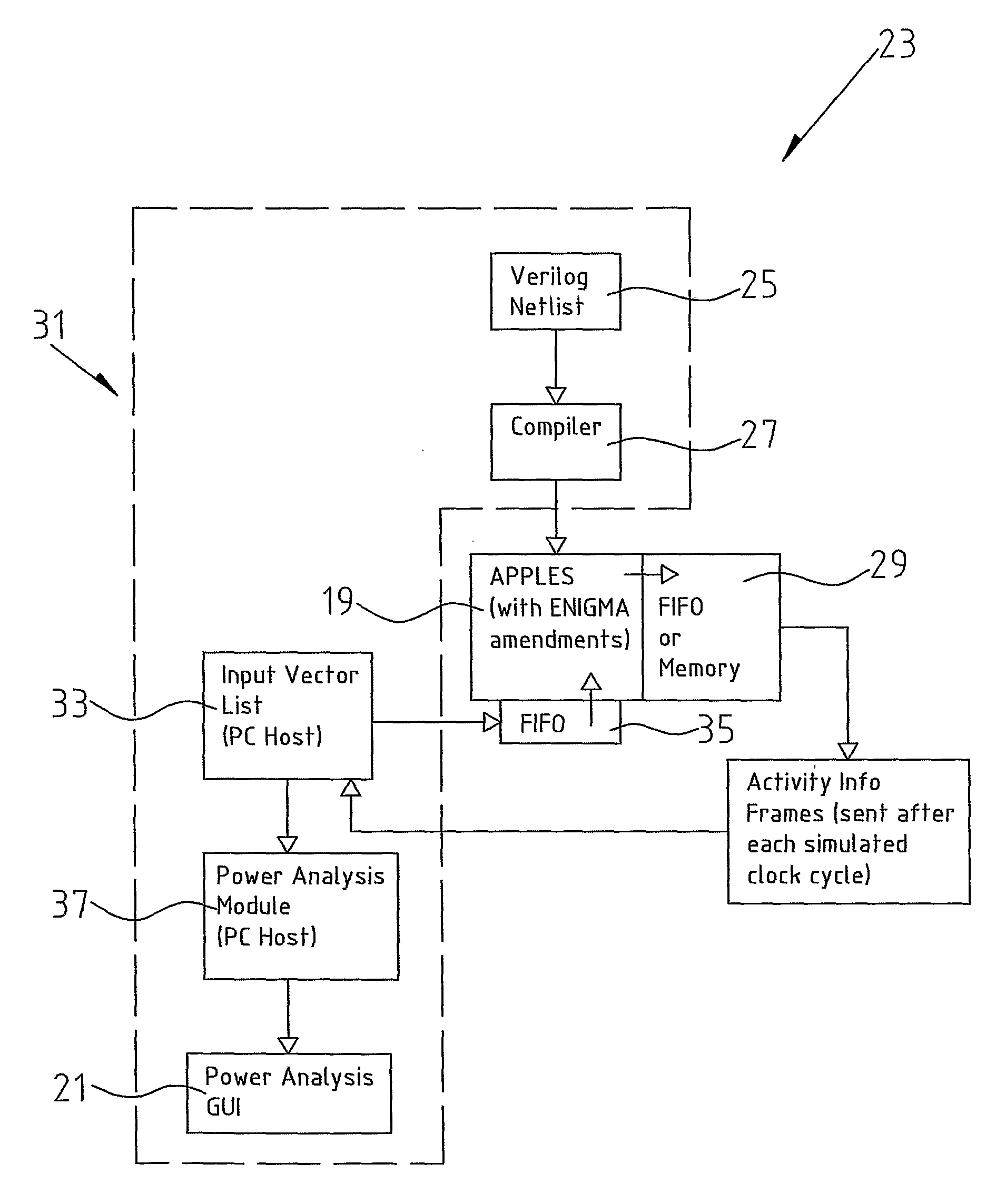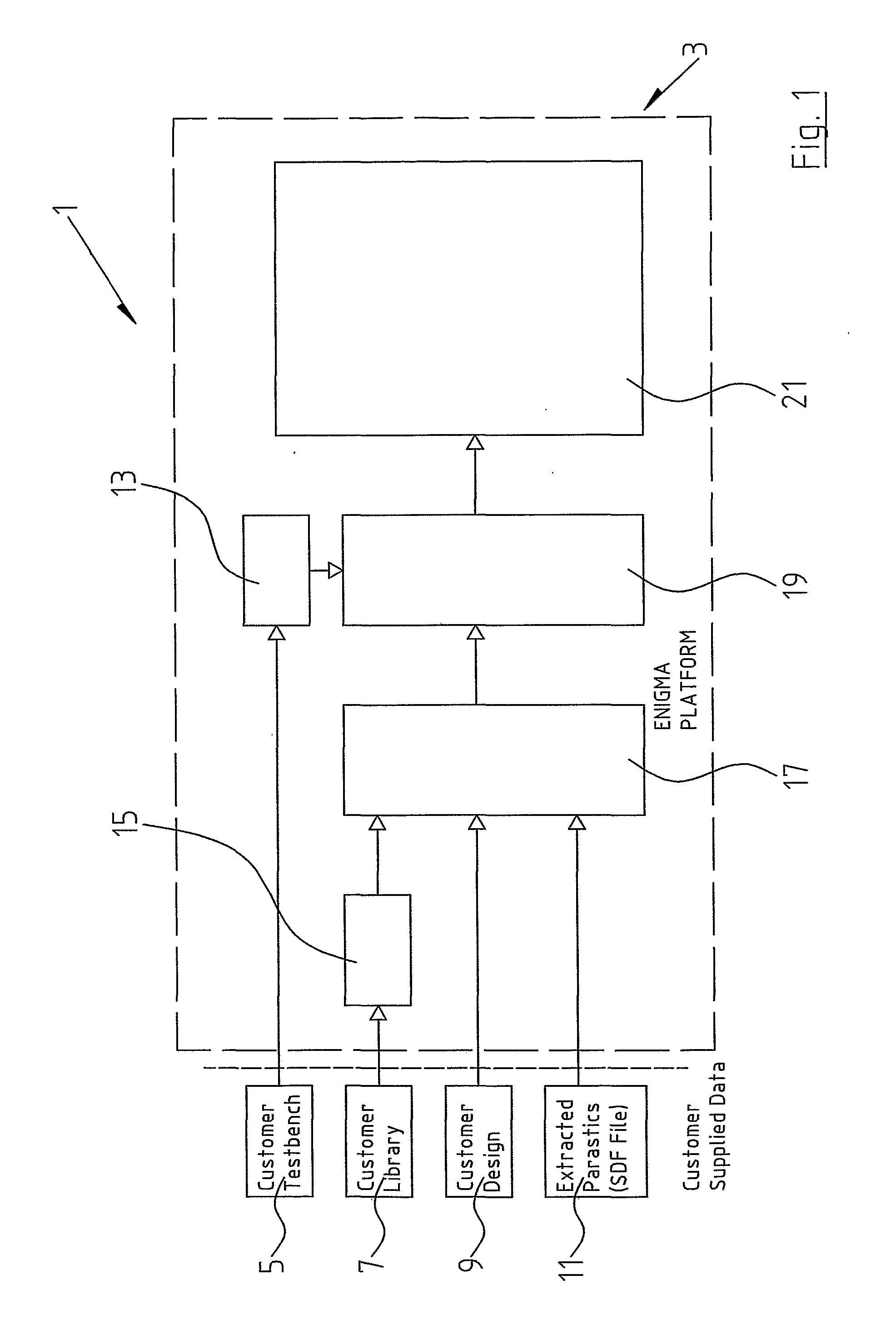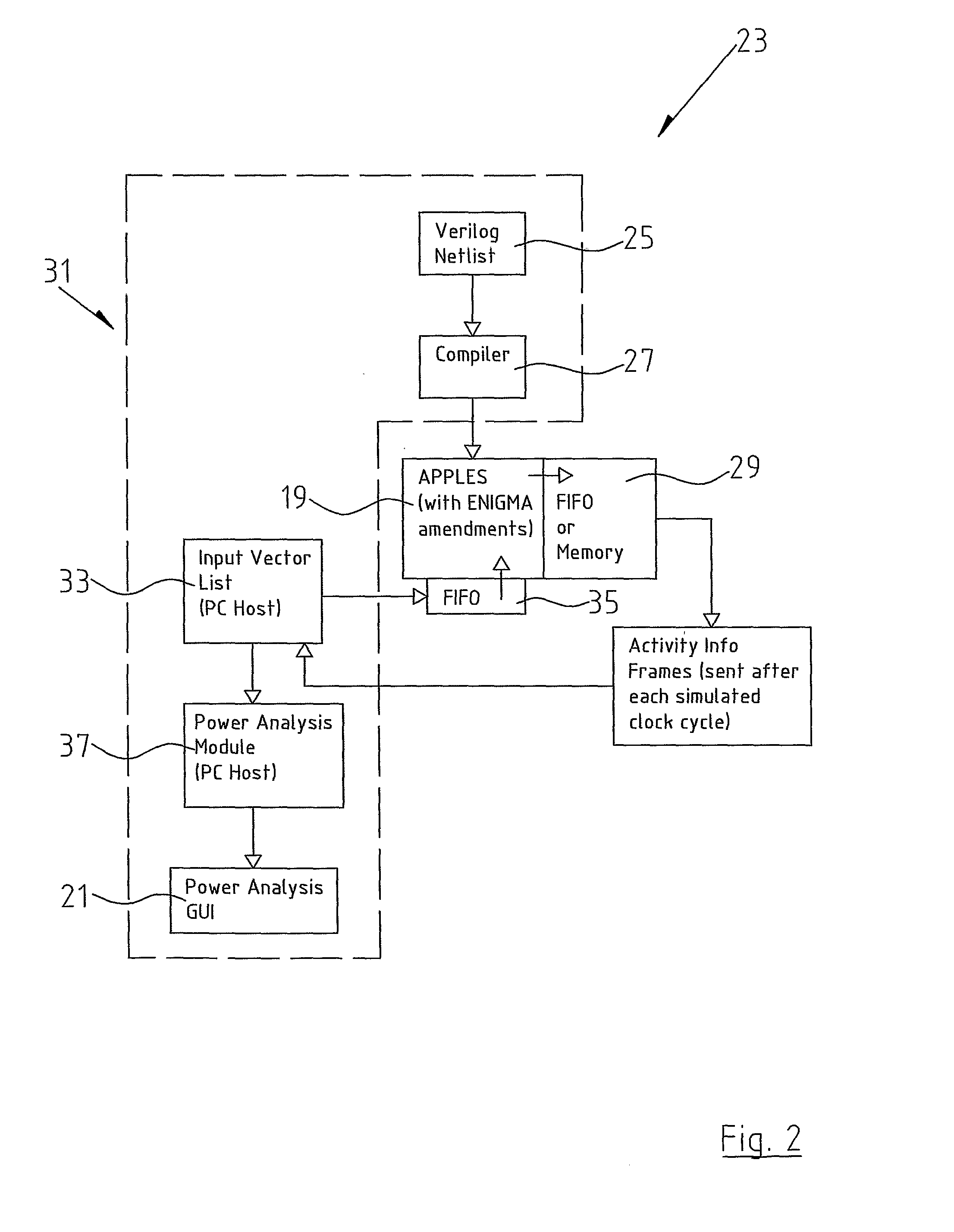Method and Processor for Power Analysis in Digital Circuits
a power analysis and digital circuit technology, applied in the direction of cad circuit design, program control, instruments, etc., can solve the problems of inability to accurately determine spatial and temporal correlation, contribute significantly to power consumption, and inconvenient computation, etc., to achieve accurate analysis, not computationally expensive, and accurate analysis
- Summary
- Abstract
- Description
- Claims
- Application Information
AI Technical Summary
Benefits of technology
Problems solved by technology
Method used
Image
Examples
Embodiment Construction
[0075]The invention will now be more clearly understood from the following description of some embodiments thereof, given by way of example only in which:
[0076]FIG. 1 is system overview of a system in which the analysis of digital circuits may be carried out;
[0077]FIG. 2 is a block diagram of a system in which the analysis of digital circuits may be carried out incorporating the processor according to the present invention;
[0078]FIG. 3 is a block diagram of an alternative system incorporating the processor according to the present invention;
[0079]FIG. 4 is a block diagram of the additional registers incorporated into the processor of the present invention;
[0080]FIG. 5 is a component diagram of a complex cell which may be modeled using the method according to the invention;
[0081]FIG. 6 is a block diagram of a typical design methodology with the processor and method according to the invention incorporated in the design flow; and
[0082]FIG. 7 is a block diagram of a processor with assoc...
PUM
 Login to View More
Login to View More Abstract
Description
Claims
Application Information
 Login to View More
Login to View More - R&D
- Intellectual Property
- Life Sciences
- Materials
- Tech Scout
- Unparalleled Data Quality
- Higher Quality Content
- 60% Fewer Hallucinations
Browse by: Latest US Patents, China's latest patents, Technical Efficacy Thesaurus, Application Domain, Technology Topic, Popular Technical Reports.
© 2025 PatSnap. All rights reserved.Legal|Privacy policy|Modern Slavery Act Transparency Statement|Sitemap|About US| Contact US: help@patsnap.com



